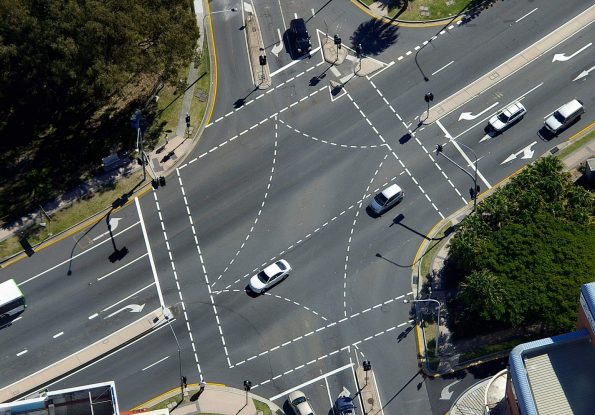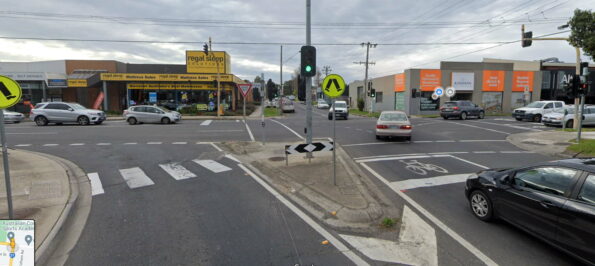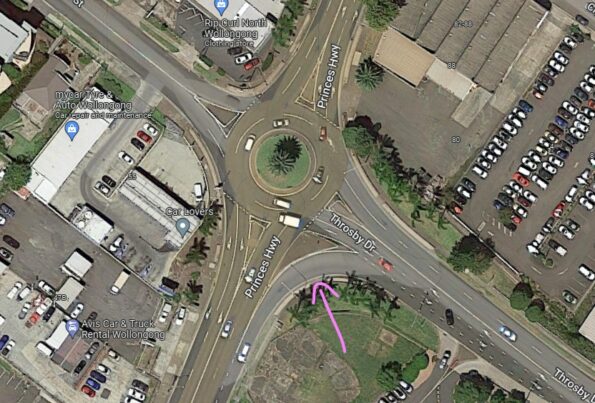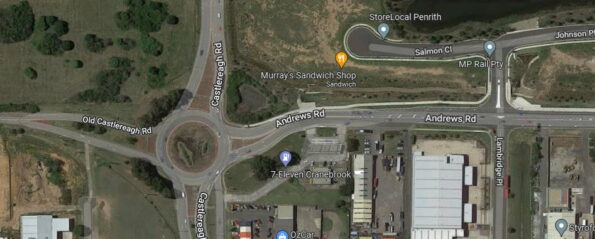At an intersection, roundabouts and traffic lights can have the same desired effect, but they have very different characteristics, advantages and disadvantages.
In a city, there are far more traffic lights than there are roundabouts for one main reason: space. A four-entrance roundabout takes up more room than a similar four-way intersection. But when a new area is developed, what considerations are there when choosing roundabouts vs traffic lights?
Advantages of traffic lights
Traffic lights use less real estate – simply erect poles with lights on them.
Traffic lights can be programmed to allow pedestrians across at specific phases.
Traffic lights can be programmed to detect traffic flows and optimise who has priority.
Traffic lights work well when there is a lot of traffic from one direction which would make a roundabout difficult to enter.
Traffic lights are better for complex intersections as the flow of traffic is not confusing to drivers.

Traffic lights that have left filter lanes with give way signs are even more efficient.

Traffic lights are more efficient in heavy traffic as vehicles can get up-to-speed, being assured a clear run through the intersection, rather than shuffling slowly one-by-one up to a roundabout.
Traffic lights are better where sight lines are disrupted by buildings in highly urbanised areas.
Disadvantages of traffic lights
Maintenance on the lights can be disruptive, and their continued operation relies on continued power and no computer failure; there’s a cost associated with keeping the lights working.
Red light runners cause dangerous situations.
In low traffic situations, vehicles are often left waiting at a red light, burning fuel while idling, when they could have continued.
Advantages of roundabouts
Roundabouts are good for simple intersections where it makes it safer for road users on a side road to enter the traffic flow (particularly turning right out of a side road)
Better traffic flow in light single-lane traffic on residential streets can be achieved with a roundabout or series of roundabouts.

Roundabouts with a free left turn are more efficient than a regular roundabout.

Small roundabouts and mini-roundabouts are cheaper in the long term than traffic lights.
Roundabouts are cheaper when there is only one lane approaching from each direction. With traffic lights, there’s often a requirement to make the primary entrances and exits two lanes, which increases the road’s real estate requirements.
Vehicle-only crashes at roundabouts tend to be very low-speed, and therefore low casualty rate.
Disadvantages of roundabouts
Roundabouts take up more space, especially on faster roads where larger turning radii are required to make it safer for heavy vehicles in terms of rollover prevention.

Roundabouts are more expensive to construct because they take more raw materials (surface materials, and materials for the central reservation in the case of large roundabouts), and considerations for drainage. A large roundabout with grass and plants needs regular maintenance.
Many people don’t know how to signal which causes confusion. Many people indicate right when they intend to go straight on, which is dangerous for those entering the roundabout to their left.
Many people don’t understand lane discipline on roundabouts.
Large roundabouts sometimes need more street lights than an equivalent intersection, negating the saving on power through not having traffic lights.
Roundabouts are more difficult for cyclists and pedestrians (no pedestrian crossings). Injury rates for cyclist crashes at roundabouts are higher.
Roundabouts are less efficient than traffic lights in heavy traffic due to traffic stacking up down the road and making slow progress entering the roundabout
Vehicles can back up around the roundabout in heavy traffic, blocking entry for other vehicles
On high-speed roads, the lack of lights doesn’t draw a driver’s attention to the fact they need to slow down to negotiate the roundabout, leading to late braking and some accidents.
Traffic lights + roundabouts?
In some places around the world (it’s very common in the UK), there are traffic lights controlling the flow onto a roundabout during certain times. This allows for a better flow to be maintained, and less likelihood of drivers blocking entrances and exits.
